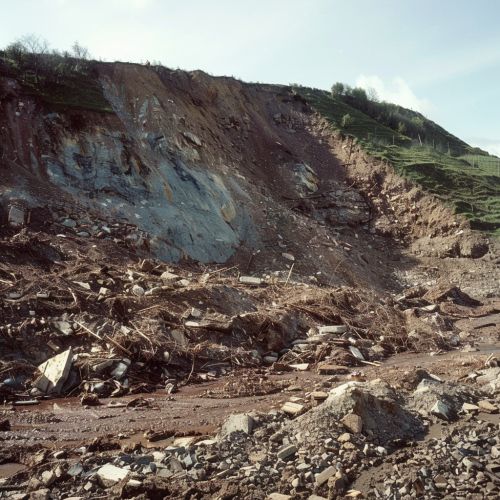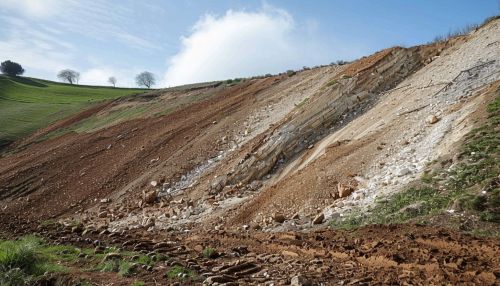Mass Wasting
Introduction
Mass wasting, also known as slope movement or mass movement, is the geomorphological process by which soil, sand, regolith, and rock move downslope under the force of gravity. It is a key aspect of erosion and sediment transport, and it plays a significant role in shaping the Earth's surface. Mass wasting can occur gradually over time, or it can be a sudden, catastrophic event, such as a landslide.
Types of Mass Wasting
There are several different types of mass wasting, each characterized by the type of movement and the speed at which the material is moving downslope.
Creep
Soil creep is a slow, steady, downward progression of rock and soil down a slope. It is usually not noticeable except through its long-term effects. These movements are often only a few millimeters or centimeters a year.
Slides
Slides occur when a mass of material moves along a distinctive plane of weakness, such as a fault, a bedding plane, or a contact between differing rock types. There are two types of slides: rotational slides and translational slides.
Rotational Slides
Rotational slides, or slumps, occur when a portion of a slope fails along a concave-upward set of shear surfaces with a rotation or backward tilting.
Translational Slides
Translational slides, or block slides, occur when a mass of soil or rock moves along a planar surface with little rotation or backward tilting.
Flows
Flows are downslope movements of unconsolidated material mixed with water. They can be slow, as in a solifluction, or fast, as in a debris flow or mudflow.
Factors Influencing Mass Wasting
Several factors can influence the likelihood and severity of mass wasting events. These include the slope angle, the type of material present on the slope, the amount of water in the material, and the vegetation cover.
Slope Angle
The steeper the slope, the more likely it is that mass wasting will occur. As the slope angle increases, the gravitational force pulling the material downslope also increases.
Material Type
Different types of material have different strengths and weaknesses. For example, loose, unconsolidated material like sand or gravel is more likely to experience mass wasting than solid bedrock.
Water Content
Water can both trigger mass wasting and increase its severity. Water adds weight to the slope, and it can also act as a lubricant, making it easier for material to move downslope.
Vegetation Cover
Vegetation can help to stabilize slopes and prevent mass wasting. The roots of plants and trees can help to hold soil and rock in place, reducing the likelihood of mass wasting.
Impacts of Mass Wasting
Mass wasting can have significant impacts on both natural environments and human settlements. It can lead to loss of life and property, damage to infrastructure, and changes to the landscape.
Environmental Impacts
Mass wasting can cause significant changes to the landscape, including the creation of new landforms such as cliffs and valleys. It can also lead to the loss of soil and vegetation, which can impact local ecosystems.
Human Impacts
Mass wasting events can be catastrophic for human settlements. They can lead to loss of life and property, damage to infrastructure such as roads and bridges, and economic losses.
Prevention and Mitigation
There are several strategies that can be used to prevent or mitigate the impacts of mass wasting. These include slope stabilization, early warning systems, and land use planning.
Slope Stabilization
Slope stabilization involves techniques to increase the stability of a slope and prevent mass wasting. This can include the construction of retaining walls, the installation of drainage systems to remove excess water, and the planting of vegetation to hold the soil in place.
Early Warning Systems
Early warning systems can help to predict mass wasting events and provide time for people to evacuate or take other protective measures. These systems can include monitoring of slope movements, weather forecasts, and geological surveys.
Land Use Planning
Land use planning can help to reduce the risk of mass wasting by restricting development in areas that are prone to mass wasting. This can include zoning laws, building codes, and other regulations.
See Also


